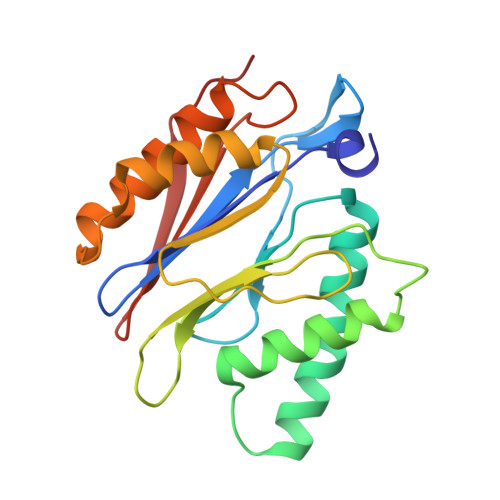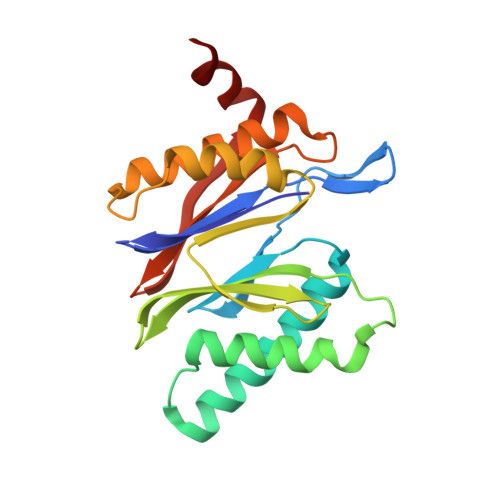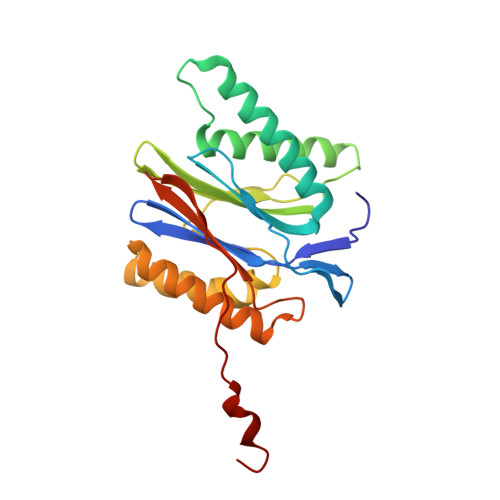The Y Phi motif defines the structure-activity relationships of human 20S proteasome activators.
Opoku-Nsiah, K.A., de la Pena, A.H., Williams, S.K., Chopra, N., Sali, A., Lander, G.C., Gestwicki, J.E.(2022) Nat Commun 13: 1226-1226
- PubMed: 35264557
- DOI: https://doi.org/10.1038/s41467-022-28864-x
- Primary Citation of Related Structures:
6XMJ - PubMed Abstract:
The 20S proteasome (20S) facilitates turnover of most eukaryotic proteins. Substrate entry into the 20S first requires opening of gating loops through binding of HbYX motifs that are present at the C-termini of certain proteasome activators (PAs). The HbYX motif has been predominantly characterized in the archaeal 20S, whereas little is known about the sequence preferences of the human 20S (h20S). Here, we synthesize and screen ~120 HbYX-like peptides, revealing unexpected differences from the archaeal system and defining the h20S recognition sequence as the Y-F/Y (YФ) motif. To gain further insight, we create a functional chimera of the optimized sequence, NLSYYT, fused to the model activator, PA26 E102A . A cryo-EM structure of PA26 E102A -h20S is used to identify key interactions, including non-canonical contacts and gate-opening mechanisms. Finally, we demonstrate that the YФ sequence preferences are tuned by valency, allowing multivalent PAs to sample greater sequence space. These results expand the model for termini-mediated gating and provide a template for the design of h20S activators.
Organizational Affiliation:
Department of Pharmaceutical Chemistry, University of California San Francisco, San Francisco, CA, USA.
































